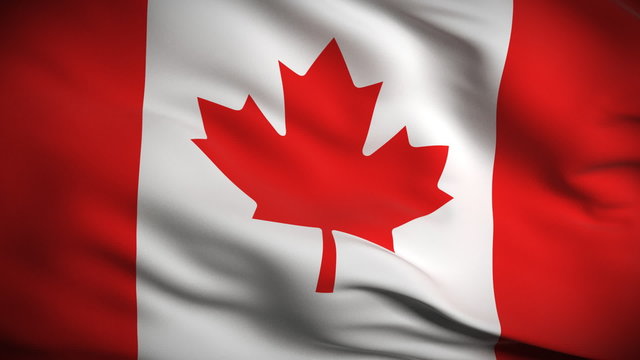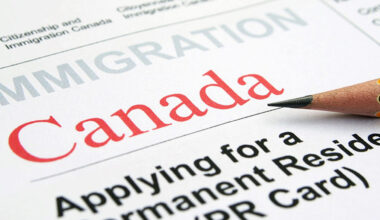Published May 12, 2025
Finding Your Path Through Canada’s Complex Immigration System
Interactive immigration pathways flowcharts have become essential tools for anyone serious about immigrating to Canada successfully. After two decades helping thousands of clients navigate Canada’s increasingly complex immigration system, I can tell you that understanding the exact pathway that matches your unique qualifications and goals is the single most important factor in a successful application. This comprehensive guide will explain how interactive immigration pathways flowcharts work, how to use them effectively, and how they can save you time, money, and heartache on your journey to Canada.
Canada offers over 100 different immigration programs, each with specific eligibility criteria, documentation requirements, and processing procedures. The wrong pathway choice can cost you years of waiting or lead to expensive rejections.
Let’s explore how these powerful tools can transform your immigration journey from confusing to crystal clear.
 Understanding the Major Canadian Immigration Pathways
Understanding the Major Canadian Immigration Pathways
Before diving into flowchart navigation, it’s essential to understand the primary immigration pathway categories and how they intersect:
Economic Immigration Pathways
Economic immigration represents approximately 60% of Canada’s annual immigration targets and includes:
Express Entry System:
- Federal Skilled Worker Program (FSWP)
- Federal Skilled Trades Program (FSTP)
- Canadian Experience Class (CEC)
Provincial Nominee Programs (PNPs):
- Express Entry-aligned PNP streams
- Base PNP streams (independent from Express Entry)
Quebec Economic Immigration:
- Quebec Skilled Worker Program
- Quebec Experience Program (PEQ)
- Quebec Entrepreneur/Investor/Self-Employed Programs
Business Immigration:
- Start-Up Visa Program
- Self-Employed Persons Program
- Various provincial entrepreneur streams
Rural and Special Programs:
- Atlantic Immigration Program
- Rural and Northern Immigration Pilot
- Various occupation-specific pilots
Family Class Immigration Pathways
Family reunification represents approximately 25% of Canada’s immigration and includes:
Spousal/Partner Sponsorship:
- Married spouse sponsorship
- Common-law partner sponsorship
- Conjugal partner sponsorship (rare circumstances)
Child Sponsorship:
- Dependent children sponsorship
- Adoption immigration procedures
Parent and Grandparent Sponsorship:
- Parent and Grandparent Program (PGP)
- Super Visa (temporary long-term visits)
Other Family Sponsorship:
- Orphaned sibling, nephew/niece, or grandchild sponsorship
Humanitarian and Refugee Pathways
Refugee and humanitarian pathways represent approximately 15% of Canada’s immigration:
Refugee Programs:
- Government-Assisted Refugee Program
- Private Sponsorship of Refugees
- Blended Visa Office-Referred Program
Humanitarian and Compassionate Grounds:
- H&C applications based on establishment or hardship
- Temporary Resident Permits for inadmissible persons
- Public policy-based temporary and permanent residence
How Interactive Immigration Pathways Flowcharts Work
Interactive immigration pathways flowcharts use dynamic, decision-based logic to guide users to appropriate immigration options based on their specific profile. Here’s how they typically function:
1. Profile Assessment Questions
The flowchart begins with fundamental profile questions:
- Age
- Education level and field
- Language proficiency
- Work experience (years and occupations)
- Family connections to Canada
- Previous Canadian experience
- Financial resources
- Business ownership/management (if applicable)
2. Pathway Elimination Logic
As you answer questions, the interactive immigration pathways flowchart eliminates inappropriate options:
- If you’re over 45, pathways where age significantly impacts points may be downgraded
- If you lack post-secondary education, certain skilled worker streams may be eliminated
- If your language scores are below minimum thresholds, language-dependent programs are removed
- If you lack qualifying work experience, occupation-based pathways are filtered out
3. Pathway Recommendation Algorithms
The remaining viable pathways are ranked based on:
- Likelihood of qualification
- Processing time estimates
- Complexity of application process
- Documentation requirements
- Cost considerations
- Provincial/territorial destination options
4. Documentation and Next Step Guidance
For recommended pathways, the interactive immigration pathways flowchart provides:
- Required document checklists
- Step-by-step application procedures
- Timeline expectations
- Potential challenges and solutions
- Alternative or parallel pathway recommendations
Major Immigration Decision Points in Flowchart Navigation
Interactive immigration pathways flowcharts help navigate critical decision points that determine your optimal route:
Decision Point 1: Express Entry vs. Provincial Nomination
The flowchart first determines if your profile is competitive for Express Entry:
Express Entry Favorable Indicators:
- Age 20-29 (maximum age points)
- Masters or PhD education
- Strong English/French language scores (CLB 9+)
- 3+ years skilled work experience
- Canadian education or work experience
- Spouse with strong language/education
Provincial Nomination Favorable Indicators:
- Specific work experience in provincial demand
- Lower language proficiency (CLB 5-7 acceptable in many PNPs)
- Family connections to specific provinces
- Previous study/work in specific province
- Job offer from provincial employer
- Targeted occupation or entrepreneurial background
“The interactive immigration pathways flowchart showed me that despite my modest CRS score of 380, Saskatchewan’s Occupation In-Demand category was perfect for my manufacturing management experience,” explains Adeola from Nigeria. “Without this guidance, I might have spent years trying to increase my Express Entry points when a provincial pathway was available immediately.”
Decision Point 2: Economic vs. Family Sponsorship Routes
For those with Canadian family connections, the flowchart determines whether economic or family pathways offer advantages:
Family Sponsorship Advantages:
- Potentially faster processing for spouses/partners
- No points-based selection
- No language testing requirements for sponsored persons (except Quebec)
- No education or work experience requirements
Economic Program Advantages (even with family in Canada):
- Potential for faster processing through Express Entry
- Independence from sponsor financial obligations
- Immediate work authorization possibilities
- Provincial options beyond sponsor’s location
“I qualified for both spousal sponsorship through my Canadian husband and Express Entry based on my nursing credentials,” shares Maria. “The interactive immigration pathways flowchart helped me see that Express Entry would be 6 months faster in my specific case, which was crucial since I had a job waiting.”
Decision Point 3: Temporary to Permanent Pathways
For those not immediately qualifying for permanent residence, the flowchart identifies stepping-stone approaches:
Study Permit Pathway Advantages:
- Canadian educational credentials (highly valued in immigration)
- Post-Graduation Work Permit eligibility
- Canadian experience development
- In-school and network connections
- Provincial International Graduate streams
Work Permit Pathway Advantages:
- Canadian work experience (valued in multiple programs)
- Employer-specific relationships that may lead to support
- Provincial Canadian Work Experience categories
- Potential for Canadian Experience Class eligibility
“The interactive immigration pathways flowchart showed me that with my current profile, immediate permanent residence was unlikely,” explains Wei. “Instead, it suggested pursuing a Canadian master’s degree, followed by a PGWP, leading to Canadian Experience Class eligibility—a realistic three-year pathway to permanent residence that worked perfectly.”
Case Studies: Interactive Immigration Pathways in Action
Real examples demonstrate how interactive immigration pathways flowcharts create personalized solutions:
Case 1: Young Professional with Strong Qualifications
Profile:
- Software developer, 28 years old
- Bachelor’s degree in Computer Science
- 4 years of relevant experience
- IELTS scores: L:8.5, R:8, W:7.5, S:7.5
- No Canadian connections or experience
- Single
Traditional Advice: Apply through Express Entry Federal Skilled Worker Program
Interactive Flowchart Solution: Express Entry primary pathway with concurrent applications to Ontario and British Columbia PNP tech streams, which often select directly from the Express Entry pool for tech workers regardless of CRS score. This dual approach reduced waiting time by 7 months.
Case 2: Mid-Career Professional with Moderate Language
Profile:
- Financial analyst, 42 years old
- Master’s degree in Finance
- 12 years of experience
- IELTS scores: L:6.5, R:6.5, W:6, S:6
- No Canadian connections
- Married, spouse with bachelor’s degree and IELTS 5.5
Traditional Advice: Apply through Express Entry, work on improving language scores
Interactive Flowchart Solution: Manitoba Provincial Nominee Program through the Skilled Worker Overseas stream, which values work experience more heavily than language and has lower language requirements. This pathway avoided an 18-month wait trying to reach competitive Express Entry scores.
Case 3: Skilled Trade Worker with Limited Formal Education
Profile:
- Electrician, 35 years old
- Technical certification but no degree
- 10 years of experience
- IELTS scores: L:6, R:5.5, W:5.5, S:6
- Sister living in Alberta
- Married with two children
Traditional Advice: Pursue family sponsorship through sister (which isn’t available for siblings)
Interactive Flowchart Solution: Alberta Opportunity Stream application with family support letter, focusing on high demand for electricians in the province. Alternative pathway through federal Skilled Trades Program with Alberta family connection points. This corrected a fundamental misunderstanding about family sponsorship eligibility.
Common Pathway Selection Mistakes Avoided by Flowcharts
Interactive immigration pathways flowcharts help prevent these frequent and costly errors:
Mistake 1: Overreliance on Express Entry
Many candidates fixate on Express Entry despite low competitive scores, missing provincial opportunities better suited to their profiles.
“I wasted a year with a CRS score of 415, hoping Express Entry cutoffs would drop,” admits Carlos. “The interactive immigration pathways flowchart would have immediately shown me that New Brunswick’s Essential Worker Stream was perfect for my restaurant management experience.”
Mistake 2: Misunderstanding Family Sponsorship Eligibility
Canadian immigration only allows sponsorship of specific family relationships, not extended family.
“I mistakenly believed my Canadian cousin could sponsor me until the interactive immigration pathways flowchart clarified that cousins aren’t eligible sponsors,” explains Fatima. “This saved me from a common misconception that would have led nowhere.”
Mistake 3: Ignoring Provincial Program Requirements
Provincial programs often have specific eligibility criteria beyond federal requirements.
“I was eligible for Saskatchewan’s program on paper, but the interactive immigration pathways flowchart revealed I needed demonstrated connection to the province,” “This insight led me to establish the necessary connection before applying, rather than facing rejection.”
Mistake 4: Pursuing Dead-End Pathways
Some pathways look promising but lead to immigration dead ends without permanent residence options.
“I nearly accepted a working holiday visa without realizing it wouldn’t lead to permanent residency in my field,” explains Yuki . “The interactive immigration pathways flowchart showed me a better study permit pathway that would create a clear route to permanent residence.”
Creating Your Personal Immigration Map Using Flowcharts
To maximize the benefits of interactive immigration pathways flowcharts, follow these strategic steps:
Step 1: Complete Multiple Flowchart Assessments
Different interactive immigration pathways flowcharts may yield different results based on their algorithms. Complete at least three different assessments to identify consistent recommendations.
Recommended Flowchart Resources:
- Official IRCC Come to Canada Tool
- Provincial immigration pathway tools
- Regulated consultant assessment flowcharts
Step 2: Identify Common Recommendations
Look for pathways consistently recommended across multiple assessments. These represent your highest probability options based on your current profile.
Step 3: Evaluate Timeline Projections
For each recommended pathway, document:
- Application preparation time
- Expected processing times
- Total time to permanent residence
- Work/study authorization possibilities during processing
Step 4: Create a Primary and Backup Strategy
Develop a primary pathway strategy with 1-2 backup options in case of program changes, which happen frequently in Canadian immigration.
“My primary pathway was Express Entry, but the interactive immigration pathways flowchart also identified Ontario’s Foreign Worker stream as a solid backup,” explains Lily. “When Express Entry cutoffs increased unexpectedly, I already had my alternate pathway research complete.”
Step 5: Map Required Documentation
For each potential pathway, create comprehensive document checklists based on flowchart guidance:
- Identity documentation
- Educational credentials
- Work experience proof
- Language test results
- Financial documentation
- Medical and security clearances
Step 6: Identify Opportunity for Parallel Processing
Some pathways can be pursued simultaneously:
- Express Entry profile while applying to PNPs
- Study permit applications while maintaining Express Entry profiles
- Multiple provincial expressions of interest simultaneously
“The interactive immigration pathways flowchart showed me I could maintain my Express Entry profile while applying to both Saskatchewan and Manitoba provincial programs,” says Ahmed. “This parallel approach resulted in a provincial nomination while I was still waiting in the Express Entry pool.”
Adapting Your Strategy as Circumstances Change
Immigration pathways evolve both personally and programmatically. Interactive flowcharts help adjust strategy when:
Personal Circumstances Change
Reassess using interactive immigration pathways flowcharts when you experience:
- Age milestones that affect points
- Educational advancements
- Language score improvements
- Work experience increases
- Relationship status changes
- Financial situation improvements
Immigration Program Changes Occur
Canadian immigration programs frequently change. Reassess when:
- New programs are announced
- Existing program requirements change
- Points systems are recalibrated
- Processing priorities shift
- Occupation lists are updated
“When Canada announced the new Municipal Nominee Program, I immediately ran my profile through an updated interactive immigration pathways flowchart,” shares Sofia. “This revealed a perfect match with my urban planning background that wasn’t available six months earlier.”
Using Immigration Pathways Flowcharts with Professional Guidance
While interactive flowcharts provide excellent initial guidance, combining them with professional consultation offers significant advantages:
When to Seek Professional Advice
Consider regulated immigration consultant guidance when your situation involves:
- Previous immigration refusals
- Complex work or education history
- Potential inadmissibility concerns
- Multiple potential pathways with similar advantages
- Time-sensitive decisions with significant consequences
How to Maximize Consultant Interactions
Prepare for professional consultations by:
- Completing flowchart assessments beforehand
- Documenting specific questions about recommended pathways
- Preparing timeline requirements and constraints
- Organizing documentation summaries for review
Conclusion: Your Personalized Immigration Roadmap
Interactive immigration pathways flowcharts transform Canada’s complex immigration system from a confusing maze into a personalized roadmap to your new life. By systematically evaluating your specific qualifications, circumstances, and goals, these tools can save you years of misdirected effort and thousands of dollars in inappropriate applications.
As we’ve seen through numerous case studies, the difference between successful immigration and frustrating denial often comes down to pathway selection. The right pathway for your unique situation may not be the most obvious or most popular route, but it will be the most efficient route to your Canadian dreams.
Want more insights on Canadian immigration? Check out our comprehensive guides on Express Entry strategies, Provincial Nominee Programs, and settlement preparation resources.
Official Sources for Interactive Immigration Research:




